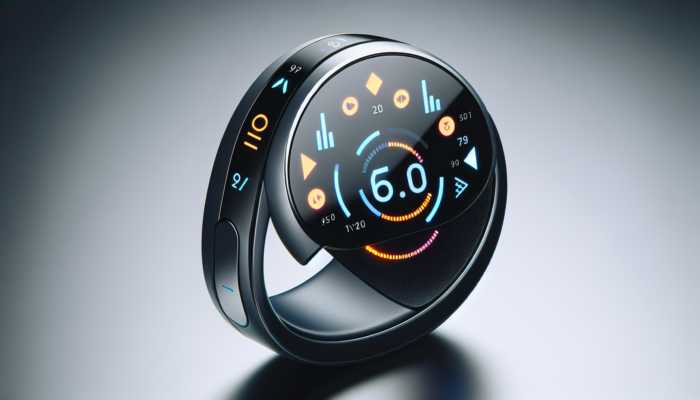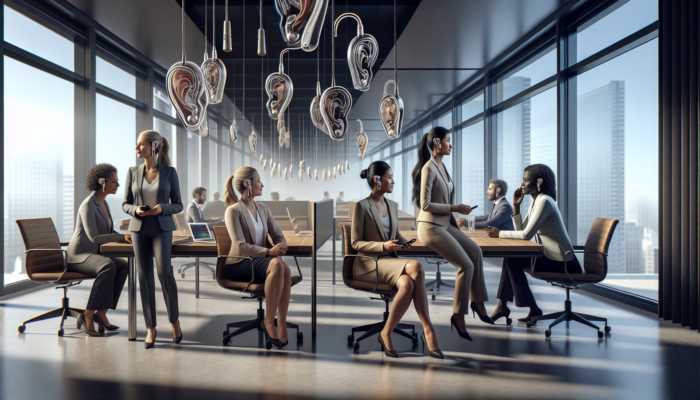Hearing Aids in Youth: Overcoming Stigma and Barriers
Last Updated on 08/11/2025 by Admin
Exploring the Stigma Associated with Hearing Aids in Young People
What Factors Contribute to Stigma Around Hearing Aids?
The stigma associated with hearing aids among young people often stems from societal attitudes that create barriers for those who require auditory assistance. These societal perceptions are shaped by a combination of ignorance, misconceptions, and media portrayals that depict hearing aids unfavorably. As a result, many young individuals perceive wearing hearing aids as a sign of weakness or inadequacy, leading to hesitation in accepting this beneficial technology. Furthermore, cultural ideals emphasizing beauty and perfection can intensify feelings of inadequacy in youth, many of whom are already navigating complex identity issues during formative years. This stigma can prevent them from fully participating in social activities and pursuing their aspirations.
A range of common misconceptions fuels this stigma, including:
- Hearing aids are only designed for the elderly.
- Wearing hearing aids signifies a disability or inferiority.
- Hearing aids are uncomfortable and visually unappealing.
- Only those with severe hearing loss require hearing aids.
- Hearing aids do not effectively improve hearing.
- Active lifestyles or sports participation is unfeasible for hearing aid users.
- The use of hearing aids implies a lack of intelligence or ability.
- Hearing aids are conspicuous and attract unwanted attention.
These fallacies significantly contribute to the reluctance of young individuals to wear hearing aids, perpetuating a harmful cycle of stigma that is difficult to dismantle. Recognizing the origins of this stigma is essential for fostering supportive environments that empower young people to utilize hearing aids without fear of social judgment.
How Does Hearing Aid Stigma Affect Mental Health in Youth?
The challenges posed by wearing hearing aids reach far beyond physical auditory issues; they deeply influence the mental health of young individuals. Many report experiencing heightened feelings of self-consciousness and anxiety stemming from their use of hearing aids, which can hinder social interactions and adversely affect their self-esteem. The fear of being viewed as different or less capable often results in withdrawal from social activities, leading to a detrimental cycle of isolation. Young people who are hesitant to connect with peers miss out on crucial opportunities for friendship and personal growth, which can further exacerbate their mental health struggles.
Research indicates that the burden of stigma can intensify feelings of loneliness and depression among youth with hearing impairments. They may feel compelled to hide their hearing aids, contributing to increased stress in social contexts. The internalization of negative societal attitudes towards hearing loss can lead to a poor self-image, making it increasingly difficult for these young individuals to advocate for their needs or seek assistance when necessary.
Addressing the mental health ramifications of hearing aid stigma is imperative. Initiatives that promote acceptance and empathy can substantially enhance the well-being of young individuals. It is vital for educators, parents, and peers to cultivate an environment where the use of hearing aids is normalized and celebrated, thereby alleviating the emotional burden of stigma.
How Can Education Help in Reducing Stigma Surrounding Hearing Aids?
Educational initiatives play a pivotal role in dismantling the stigma linked to hearing aids. By fostering understanding and compassion, these programs can dispel myths and misconceptions that contribute to negative perceptions of hearing aids. Schools and communities across the globe have launched programs designed to educate students about hearing loss and the significance of inclusivity. Such efforts can dramatically reduce stigma by showcasing the pervasiveness of hearing aids in various social contexts, illustrating that they serve as tools for empowerment rather than symbols of inadequacy.
To effectively tackle stigma, educational programs should prioritize:
- Engaging students in meaningful discussions about hearing loss and diversity.
- Inviting guest speakers who utilize hearing aids to share their personal journeys.
- Incorporating inclusive practices within school activities and curricula.
- Equipping teachers with resources to facilitate conversations about acceptance and empathy.
- Promoting peer-led initiatives, such as awareness campaigns, to foster understanding.
- Using multimedia presentations to challenge existing stereotypes about hearing aids.
- Offering opportunities for students to learn sign language to enhance inclusion.
- Encouraging collaborative projects that highlight personal accounts of youth with hearing impairments.
Through extensive educational outreach, communities can nurture a culture of acceptance and support, ultimately creating a more inclusive atmosphere for youth who use hearing aids.
Insights from Experts on Dismantling the Stigma of Hearing Aids in Youth
How Can Professionals Aid in Breaking Down Stigma?
Professionals in fields such as audiology, psychology, and youth development play a crucial role in eradicating the stigma surrounding hearing aids among young individuals. By sharing case studies and practical strategies, these experts can illustrate that hearing aids are not just devices for amplification but essential tools that enhance communication and foster connections. For example, programs that incorporate role-playing scenarios can assist youth in recognizing the importance of supporting peers who wear hearing aids, thereby promoting empathy and understanding.
Actionable steps for professionals working with youth encompass:
- Creating workshops focused on self-advocacy for young individuals with hearing aids.
- Encouraging open dialogues about hearing loss within families and educational settings.
- Developing partnerships with organizations dedicated to hearing loss advocacy.
- Implementing outreach programs that link youth with mentors who have comparable experiences.
- Facilitating forums where young individuals can share their personal stories and challenges.
- Providing tools and resources that empower youth to articulate their needs and experiences.
- Leveraging social media platforms to raise awareness and counteract stigma.
- Collaborating with schools to formulate inclusive policies for students using hearing aids.
By actively engaging with youth and their families, experts can cultivate a supportive environment that fosters acceptance and diminishes stigma surrounding hearing aids.
What Does Research Indicate About Stigma Reduction?
Research demonstrates that targeted interventions and awareness campaigns can significantly diminish the stigma associated with hearing aids among youth. Studies reveal that when young people are exposed to positive narratives and informed perspectives on hearing loss, their attitudes shift toward greater acceptance. For example, schools that have implemented programs centered on disability awareness report enhanced social dynamics and inclusivity among students.
Effective interventions include:
- Peer education programs designed to train students to raise awareness about hearing loss.
- Community engagement initiatives that promote understanding and acceptance.
- Workshops emphasizing the importance of inclusivity and effective communication strategies.
- Social media campaigns that communicate positive messages regarding hearing aids.
- Collaborative efforts between schools and local organizations to host awareness events.
- Parent education sessions that inform families about hearing loss and available support resources.
- Research-based tools that enable educators to assess and enhance classroom inclusivity.
- Creative arts programs allowing youth to express their experiences and emotions related to hearing aids.
These findings highlight that stigma reduction is achievable through collective action and informed strategies, making it essential for stakeholders—from educators to healthcare professionals—to effectively engage with the youth community.
What Strategies Should Be Implemented Based on Expert Recommendations?
To effectively implement expert recommendations aimed at diminishing the stigma linked to hearing aids, a comprehensive approach is crucial. Creating supportive environments encompasses not only awareness campaigns but also structural changes within educational and social settings. Schools and organizations can take concrete actions to ensure that youth with hearing aids feel accepted and empowered.
Effective implementation strategies involve:
- Providing regular training for educators on inclusivity and accommodations for students utilizing hearing aids.
- Integrating discussions about hearing loss into health education curricula.
- Establishing peer mentoring programs connecting youth with hearing impairments to role models.
- Utilizing testimonials from youth with hearing aids in promotional materials to humanize their experiences.
- Encouraging feedback from youth and families regarding their experiences to inform future initiatives.
- Collaborating with audiologists and mental health professionals to offer comprehensive support.
- Creating a resource hub with information on hearing aids and coping strategies for families.
- Promoting community events that celebrate diversity and highlight individuals who use hearing aids.
By prioritizing these strategies, communities can foster an inclusive and accepting atmosphere, allowing youth with hearing aids to thrive without the burden of stigma.
What Are the Effects of Stigma on Youth’s Overall Quality of Life?
Social Isolation: Understanding Its Impacts
The stigma associated with hearing aids can lead to significant social isolation among youth, profoundly affecting their overall quality of life. Young individuals may feel marginalized or excluded from social circles, resulting in a reluctance to engage in activities where they might attract attention to their hearing aids. This isolation can lead to missed opportunities for building friendships, personal growth, and social development.
The ramifications of social isolation are extensive. Youth who withdraw from peer interactions are at a heightened risk of experiencing loneliness and depression, which can worsen existing mental health issues. As they retreat from social situations, they often struggle to develop essential communication skills, further amplifying their sense of isolation. Participation in sports or community events can become daunting, as fears of judgment weigh heavily on their minds.
To counteract social isolation, it is crucial to foster inclusive environments where youth feel safe and accepted. This can be accomplished through community programs that promote participation and understanding. Emphasizing shared experiences and encouraging activities that require teamwork can help dismantle barriers and foster camaraderie among youth, irrespective of their hearing abilities.
What Are the Long-Term Implications of Stigma for Youth?
The long-term implications of stigma related to hearing aids can be debilitating and far-reaching. Stigma not only impacts immediate social interactions but can also shape educational and career trajectories for young individuals. When youth internalize negative perceptions about their hearing aids, they may avoid pursuing interests or career paths that necessitate strong communication skills, thereby limiting their potential.
Potential long-term effects of stigma include:
- Lower educational attainment due to decreased participation and engagement in school.
- Restricted career opportunities as confidence in abilities diminishes.
- Chronic mental health issues, including anxiety and depression.
- Challenges in forming and sustaining personal relationships.
- Diminished self-esteem and self-worth.
- Increased reliance on support networks that may not always be accessible.
- Missed opportunities for personal growth and self-advocacy.
- Difficulties in accessing resources and services due to fear of judgment.
Addressing these long-term effects necessitates a commitment to cultivating environments that promote acceptance and understanding of hearing aids. Empowering youth to embrace their identities while equipping them with the tools to navigate challenges can facilitate more positive outcomes in their overall well-being.
Strategies to Enhance Quality of Life for Youth
Enhancing the quality of life for youth affected by the stigma surrounding hearing aids involves a variety of strategies that encourage supportive networks, empowerment, and education. By fostering strong connections within communities, young individuals can gain confidence in utilizing their hearing aids and actively participating in social activities.
Essential strategies include:
- Establishing peer support groups where youth can share experiences and coping strategies.
- Implementing counseling services targeting the emotional and psychological effects of stigma.
- Encouraging participation in confidence-building activities such as drama or public speaking.
- Creating safe spaces in schools and community centers for youth to express their feelings without fear of judgment.
- Providing educational resources that inform youth about the benefits of hearing aids and effective communication strategies.
- Incorporating mindfulness and resilience training to assist youth in managing anxiety related to stigma.
- Promoting inclusive extracurricular activities that celebrate diversity and encourage teamwork.
- Encouraging youth to set personal goals concerning their milestones and achievements.
Through these initiatives, communities can aid youth in navigating the challenges associated with hearing aid stigma and improve their overall quality of life.
Exploring the Impact on Mental Health and Well-being
The stigma surrounding hearing aids has a significant impact on the mental health and well-being of youth, often resulting in heightened anxiety, depression, and reduced self-esteem. Young individuals facing stigma may internalize negative societal messages, fostering feelings of inadequacy and isolation. This internal conflict can manifest in various ways, affecting not only their mental health but also their academic performance and social relationships.
Research indicates that youth with hearing aids are at an increased risk for developing mental health issues due to societal pressures to fit in and be accepted. The constant fear of judgment can lead to avoidance behaviors, where young individuals shy away from social situations or school activities. Furthermore, the lack of understanding from peers can exacerbate feelings of loneliness and despair.
Addressing these mental health challenges is critical for nurturing resilience and promoting positive self-image. Communities must prioritize mental health supports through counseling, peer mentoring, and educational programs that underscore the importance of empathy and acceptance. When young individuals feel valued and understood, they are more likely to flourish despite the challenges stigma presents.
Effective Strategies for Addressing the Stigma of Hearing Aids in Youth
What Are the Key Elements of Successful Awareness Campaigns?
Successful awareness campaigns play a pivotal role in combating the stigma surrounding hearing aids among youth. These initiatives should prioritize education, personal narratives, and positive representation to shift public perceptions. By humanizing the experiences of young individuals who wear hearing aids, campaigns can cultivate a narrative that emphasizes empowerment rather than disability.
Key components of effective awareness campaigns include:
- Personal testimonials from youth who use hearing aids, sharing authentic insights into their journeys.
- Collaboration with influencers and public figures who advocate for inclusivity.
- Utilization of multimedia platforms, such as social media, to engage a broader audience and connect with young people.
- Interactive events that allow youth to try on hearing aids and discuss their experiences with peers.
- Educational resources for schools and communities that explain hearing loss and the importance of acceptance.
- Awareness days that promote activities showcasing the contributions of individuals with hearing impairments.
- Partnerships with local organizations to conduct workshops and seminars focused on hearing loss awareness.
- Incorporation of art and creativity to convey impactful messages surrounding acceptance and understanding.
By leveraging these components, awareness campaigns can initiate a ripple effect of understanding and acceptance, ultimately reducing stigma and fostering a more inclusive environment for youth who use hearing aids.
How Do Peer Support Groups Contribute to Stigma Reduction?
Peer support groups are instrumental in addressing the stigma associated with hearing aids among youth. These groups provide a safe environment for young individuals to share their experiences, concerns, and coping strategies. By connecting with others facing similar challenges, youth can feel less isolated and more empowered to embrace their identities.
The advantages of peer support groups include:
- Offering emotional support and understanding from peers with shared experiences.
- Facilitating conversations about challenges related to stigma and hearing aids.
- Encouraging friendship development based on common experiences and mutual understanding.
- Providing a platform for youth to practice self-advocacy and enhance communication skills.
- Hosting activities that promote confidence and teamwork among group members.
- Creating mentorship opportunities where older youth can guide younger participants.
- Fostering a sense of community and belonging, thereby decreasing feelings of isolation.
- Empowering youth to advocate against stigma and promote awareness within their schools and communities.
By establishing and supporting peer support groups, communities can equip youth with the resources and tools necessary to navigate stigma and flourish with their hearing aids.
In What Ways Can Families Provide Support to Youth with Hearing Aids?
Families are integral to supporting youth who wear hearing aids and assisting them in overcoming the stigma associated with hearing loss. Open communication and a positive outlook toward hearing aids can significantly influence a young person’s self-esteem and willingness to accept their hearing devices.
Key methods families can use to support youth include:
- Encouraging open discussions about hearing loss and the significance of utilizing hearing aids.
- Normalizing hearing aid use as a routine aspect of life, similar to wearing glasses for vision correction.
- Advocating for inclusive environments within schools and social contexts.
- Participating in support groups and educational workshops to gain a better understanding of hearing loss.
- Promoting resilience and self-advocacy skills, empowering youth to articulate their needs.
- Celebrating achievements and milestones related to the use of hearing aids.
- Providing emotional support during challenging moments when stigma may arise.
- Encouraging involvement in activities that foster confidence and social interaction.
Through proactive support, families can help youth navigate the hurdles of stigma and cultivate a positive self-image, motivating them to wear their hearing aids with pride.
Why Are School Programs Crucial for Stigma Reduction?
School programs that educate students about hearing loss and promote inclusivity are vital for diminishing the stigma associated with hearing aids among youth. By embedding awareness initiatives into the school curriculum, educators can instill understanding and empathy among peers, resulting in a more inclusive atmosphere for all students.
Effective school programs should focus on:
- Integrating lessons on hearing loss into health education curricula to raise awareness.
- Training teachers to recognize and tackle stigma while fostering inclusivity.
- Creating opportunities for students to meet and engage with peers who use hearing aids.
- Organizing school-wide events that celebrate diversity and underscore the importance of inclusion.
- Encouraging student-led initiatives advocating for acceptance and support for peers with hearing aids.
- Utilizing technology and multimedia to develop engaging presentations on hearing loss awareness.
- Establishing collaborations with local organizations to offer resources and support to schools.
- Encouraging open discussions among students regarding hearing loss and personal experiences.
By prioritizing inclusive education, schools can help mitigate stigma and empower youth with hearing aids to feel accepted and appreciated within their communities.
What Advantages Are Gained by Addressing Stigma?
How Can Mental Health Outcomes Improve?
Addressing the stigma surrounding hearing aids can lead to substantial benefits for the mental health outcomes of youth. By reducing stigma, a more accepting environment is created, which can contribute to lower anxiety levels and enhanced self-confidence. When youth feel understood and accepted, they are more inclined to participate in social activities and cultivate healthy relationships.
The positive mental health outcomes resulting from stigma reduction include:
- Decreased anxiety and depression related to social interactions.
- Enhanced self-worth as youth learn to embrace their identities.
- Improved resilience, enabling young people to navigate challenges associated with stigma.
- Better academic performance as confidence increases and participation rises.
- Greater willingness to seek support and assistance when needed.
- Stronger community connections as acceptance fosters peer relationships.
- Positive self-image leading to healthier lifestyle choices and behaviors.
- Empowerment to advocate for oneself and others, decreasing isolation.
By proactively working to reduce stigma, communities can establish an environment where youth flourish emotionally and socially, leading to overall enhancements in well-being.
What Are the Benefits of Enhanced Social Integration?
Mitigating stigma surrounding hearing aids greatly enhances social integration for youth. When stigma diminishes, young people with hearing aids are more likely to engage in social activities, forge friendships, and experience a sense of belonging. This heightened social integration positively impacts their overall quality of life, allowing them to develop essential social skills that are beneficial in various life aspects.
The benefits of enhanced social integration include:
- Increased involvement in group activities, promoting camaraderie and teamwork.
- Improved interpersonal skills as youth freely interact with peers.
- Broadened social networks, leading to more friendship opportunities.
- Greater confidence in public settings, such as schools and community events.
- Stronger support systems formed through shared experiences and understanding.
- A decrease in feelings of loneliness and isolation.
- Heightened willingness to discuss hearing loss, promoting awareness.
- Enhanced cultural understanding as youth learn to appreciate diversity.
By prioritizing stigma reduction, communities can create spaces where youth with hearing aids feel welcomed and valued, leading to meaningful social connections.
What Educational Advantages Arise from Reducing Stigma?
Reducing stigma surrounding hearing aids can yield numerous educational advantages for youth. When young individuals feel comfortable using their hearing aids in school, they are more likely to actively participate in class discussions and collaborative projects. This increased engagement can greatly enhance their educational outcomes and overall academic success.
The educational advantages of addressing stigma include:
- Higher levels of classroom participation and engagement among students with hearing aids.
- Improved academic performance as students feel empowered to contribute.
- Greater access to learning opportunities due to enhanced communication capabilities.
- Increased collaboration with peers, leading to improved teamwork skills.
- Reduced dropout rates as youth feel more included and supported.
- Enhanced critical thinking skills as students feel free to express their ideas.
- Stronger relationships with educators who promote inclusivity and understanding.
- Increased self-advocacy skills, enabling students to effectively articulate their needs.
Through these educational benefits, addressing stigma can establish a positive feedback loop where youth thrive academically and socially, preparing them for success in their future endeavors.
What Steps Can Be Taken to Overcome the Stigma of Hearing Aids in Youth?
How Do Personal Stories Influence Stigma Reduction?
Personal stories from youth who have successfully navigated the stigma associated with hearing aids can be incredibly impactful. These narratives not only inspire hope but also offer relatable experiences that resonate with others facing similar challenges. By sharing personal accounts, young individuals can demystify hearing aids and foster acceptance among their peers.
The impact of personal stories includes:
- Creating a sense of community where youth feel understood and accepted.
- Encouraging others to share their experiences, breaking the silence surrounding stigma.
- Humanizing the experience of living with hearing loss and using hearing aids.
- Providing tangible examples of success and resilience in the face of challenges.
- Encouraging empathy among peers, reducing negative perceptions.
- Fostering a culture of openness and acceptance within schools and communities.
- Empowering youth to take pride in their identities and experiences.
- Supporting advocacy efforts that challenge stigma and promote awareness.
By amplifying personal stories, communities can create an environment of acceptance and resilience, encouraging youth to wear their hearing aids proudly.
What Influence Do Role Models Have on Youth?
Role models who utilize hearing aids can significantly impact youth by illustrating that success and confidence are attainable despite the stigma. When young individuals observe public figures or peers thriving while wearing hearing aids, it reinforces the notion that hearing aids do not define one’s abilities or potential.
The influence of role models includes:
- Providing inspiration and motivation for youth grappling with stigma.
- Demonstrating confidence and self-acceptance, challenging stereotypes.
- Encouraging youth to pursue their passions and interests without apology.
- Offering practical examples of navigating challenges associated with stigma.
- Building a sense of belonging through shared experiences and understanding.
- Creating mentoring opportunities for guidance and support.
- Amplifying the message of inclusion and acceptance within communities.
- Encouraging youth to advocate for themselves and others in their journeys.
By emphasizing the importance of role models, communities can inspire young individuals with hearing aids to embrace their identities and thrive free from stigma.
How Can Communities Foster a Supportive Environment?
Building a supportive community is essential for overcoming the stigma associated with hearing aids among youth. When communities prioritize understanding and acceptance, young individuals feel safe to express themselves and use their hearing aids without fear of judgment. Establishing support networks can significantly enhance the experiences of youth, allowing them to flourish.
Key elements of a supportive community include:
- Organizing events that foster connections and celebrate diversity.
- Encouraging open dialogues about hearing loss and its impact on youth.
- Providing resources and support for families to better understand hearing aids.
- Collaborating with schools and organizations to promote inclusivity initiatives.
- Creating safe spaces for youth to share their experiences and challenges.
- Building partnerships with local businesses to advance accessibility and awareness.
- Engaging in advocacy efforts that challenge stigma and promote understanding.
- Facilitating workshops that empower youth to share their stories and advocate for themselves.
Through these efforts, communities can cultivate an environment where youth with hearing aids feel valued, accepted, and empowered to embrace their identities.
Why Are Education and Awareness Campaigns Important?
Educational programs and awareness campaigns are crucial for reducing the stigma surrounding hearing aids among youth. By enhancing understanding and empathy, these initiatives can cultivate a more inclusive environment where young individuals feel accepted and valued.
Effective education and awareness campaigns should focus on:
- Teaching youth about hearing loss and the importance of inclusivity.
- Utilizing various mediums, including social media, to reach a broader audience.
- Incorporating interactive elements to engage youth in discussions about hearing aids.
- Highlighting success stories of individuals who wear hearing aids.
- Partnering with local organizations to provide resources and support for schools.
- Creating outreach programs that involve community members in awareness efforts.
- Encouraging youth-led initiatives that promote understanding and acceptance.
- Regularly evaluating the effectiveness of campaigns and adapting strategies as necessary.
Through comprehensive education and awareness efforts, communities can challenge stigma and create environments that celebrate diversity, fostering acceptance of youth with hearing aids.
How Can Youth Be Empowered Through Advocacy?
Empowering youth to advocate for themselves and others is a potent strategy for overcoming the stigma associated with hearing aids. When young individuals learn to express their needs and experiences, they become active participants in shaping attitudes and perceptions within their communities. Advocacy fosters resilience, confidence, and a sense of agency among youth.
Key methods to empower youth through advocacy include:
- Providing training on self-advocacy skills and effective communication.
- Encouraging participation in advocacy groups and initiatives.
- Creating platforms for youth to share their experiences and challenges.
- Connecting youth with mentors who can guide them in their advocacy efforts.
- Promoting awareness campaigns that underscore the significance of self-advocacy.
- Encouraging collaboration among youth to tackle common challenges.
- Celebrating youth-led initiatives that combat stigma and foster understanding.
- Facilitating opportunities for youth to engage with policymakers and community leaders.
By empowering youth through advocacy, communities can nurture a generation that embraces diversity and challenges stigma, ensuring that young individuals with hearing aids feel confident and accepted.
Frequently Asked Questions
What Factors Contribute to the Stigma of Hearing Aids in Youth?
The stigma can stem from societal perceptions, misconceptions about hearing loss, and fears of being perceived as different or disabled.
How Does Wearing Hearing Aids Affect Mental Health in Youth?
Wearing hearing aids can lead to self-consciousness and anxiety, affecting social interactions and self-esteem, potentially resulting in feelings of isolation and depression.
What Role Does Education Play in Alleviating Stigma?
Educational programs can dispel myths and foster a more inclusive environment, helping youth understand the significance of acceptance and the normalcy of using hearing aids.
Can Professionals Help Reduce Stigma Around Hearing Aids?
Absolutely, professionals can share effective strategies, provide essential resources, and promote awareness through workshops and community initiatives that encourage acceptance.
What Are the Long-Term Consequences of Stigma for Youth with Hearing Aids?
Long-term consequences can include diminished educational opportunities, ongoing mental health issues, and challenges in forming relationships and advocating for oneself.
What Strategies Can Enhance the Quality of Life for Youth Affected by Stigma?
Establishing supportive networks, promoting open communication, and encouraging self-advocacy can significantly improve the quality of life for youth with hearing aids.
How Can Families Support Youth with Hearing Aids?
Families can foster open communication, normalize the use of hearing aids, and advocate for inclusive environments to help youth feel more accepted.
What Role Do Peer Support Groups Play in Addressing Stigma?
Peer support groups provide a safe space for youth to share experiences and coping strategies, fostering a sense of community and reducing feelings of isolation.
How Do Awareness Campaigns Contribute to Stigma Reduction?
Effective campaigns raise awareness, share personal stories, and promote positive representation of hearing aid users, challenging negative perceptions.
How Can Youth Advocate for Themselves Regarding Hearing Aids?
Empowering youth through self-advocacy training, encouraging participation in discussions, and providing platforms to share their experiences helps them articulate their needs effectively.
Explore our journey on X!
The post Hearing Aids in Youth: Overcoming Stigma and Barriers appeared first on The Microsuction Ear Wax Removal Network.































